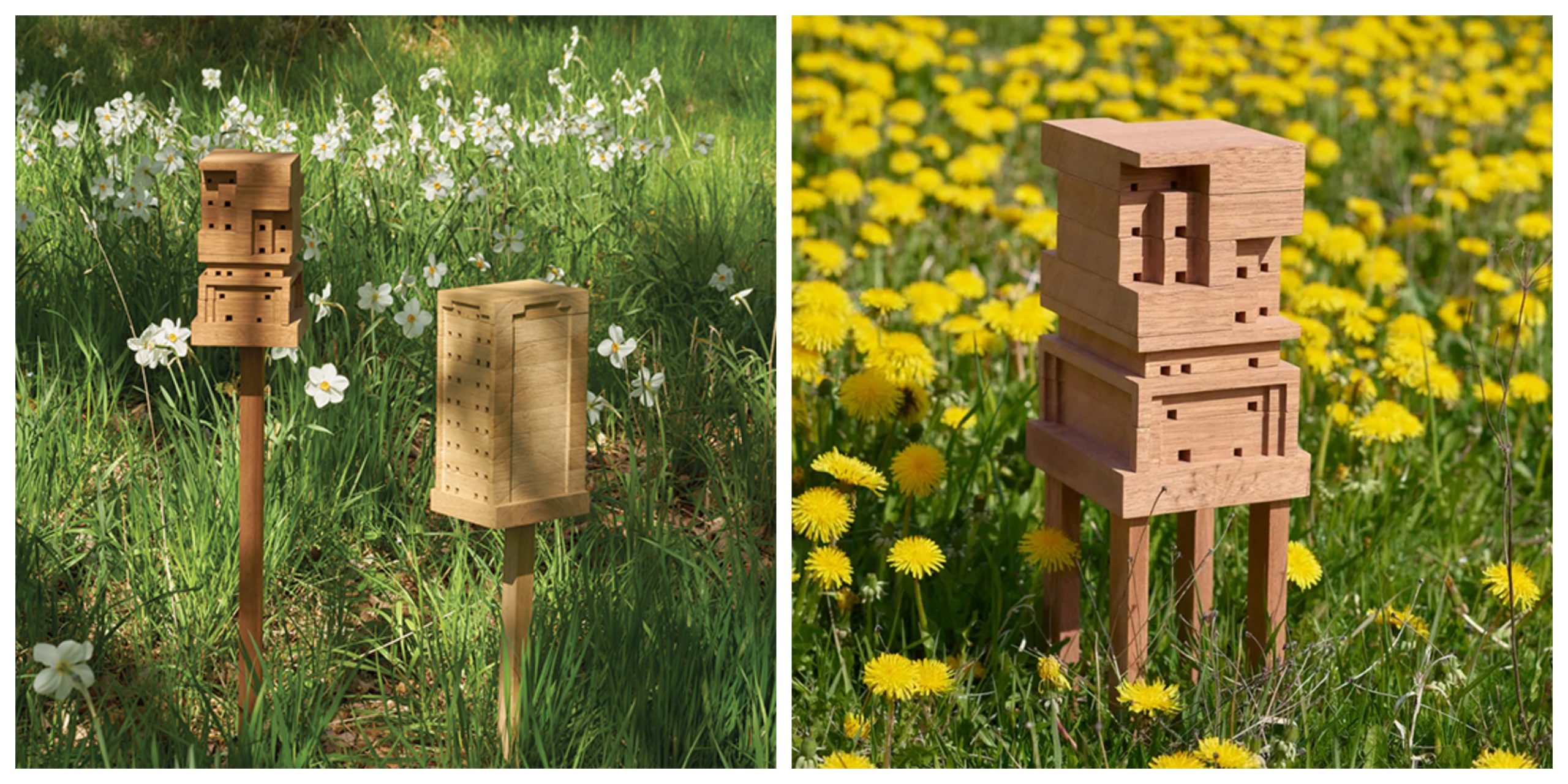Environment
You Can Build Your Own Customizable Bee Home For Free With IKEA
The projects goal is to assist people worldwide to design and download a Bee Home, for free, to take action and help in the preservation of bees.

(TMU) – World Bee Day, on May 20, is a day to celebrate the bees of the world and scientists and conservationists aim to raise the awareness of the vital role bees. These tiny creatures and other pollinators form an essential part of our ecosystem and are responsible for about a third of the world’s food supply. Humans have been destroying their natural habitat and as a consequence, bees are on the edge of extinction.
IKEA’s external innovation hub, SPACE10, to celebrate World Bee Day, launched Bee Home in partnership with Bakken & Bæck (recently named one of the World’s Most Innovative Companies in 2020 by Fast Company) and designer Tanita Klein. The projects goal is to assist people worldwide to design and download a Bee Home, for free, to take action and help in the preservation of bees.
Climate change, human impact and invasive species have put bees under threat of extinction which is why SPACE10, with their new Bee Home project, aims to make it easy for people to take action to preserve bees locally. In collaboration with Bakken & Bæck and designer Tanita Klein, they launched an open-source Bee Home.
IKEA marks a new era of democratic design with Bee Home’s free, open source design. Marking a new era of democratic design Bee Home is a free, open-source design. “With a design that is flexible and accessible through open-source design principles, everyone, everywhere is empowered to design and fabricate their own Bee Home locally,” the creatives behind the project explained.
Solitary bees make up 90% of all bees and live alone and not in colonies.They great pollinators and one can provide as much pollination as 120 honey bees. Since they live alone, they only need small holes where they can store their pollen and lay their eggs, protected from moisture and the weather.
In an effort to encourage people to take action locally by preserving solitary bees, the Bee Home project’s three step process makes it easy for anyone to design a lovely and unique home for this essential threatened species. To create their your own bee home all you need to do is select the size, visual style, and preferred placement, such as a balcony, rooftop, or garden.
https://www.instagram.com/p/CAZt3mdAFlR/
Once the design is done you simply download your personalized design files, with building instructions, for free. The files can then be forwarded to your local CNC machine owner where it can be built using digital production and finally, you can place your bee home in your chosen location and draw the bees to the area by planting some flowers in close proximity for the bees to pollinate.
“I want people to design a dream home for bees that provides the perfect environment for their offspring, while at the same time being incredibly easy to design, assemble, and place,’’ designer Tanita Klein explained. “It was important for me that Bee Home is aesthetically pleasing and almost feels like you’ve added a sculpture to your garden or your balcony. This project really exemplifies how design can be good for both people and their environment.”
If you’re afraid of bees and feel apprehensive of having them in close proximity, don’t worry. Solitary bees are friendly, and, unlike honey bees, they don’t produce honey and therefore don’t have anything to protect from prey. Male bees don’t have a sting and make up a large portion of the solitary bee population.
The bee house requires little to no maintenance other than perhaps a quick cleaning every third year, after the babies have left the house. According to the Bee Home creatives, “once you put it up, you should just leave it be.”
More info: Bee Home
Typos, corrections and/or news tips? Email us at Contact@TheMindUnleashed.com
